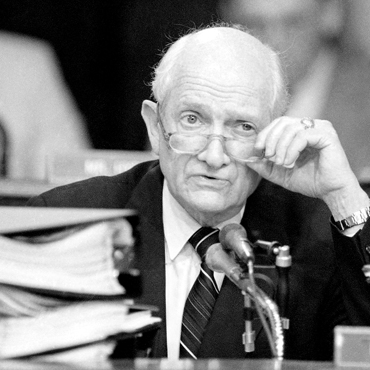Clinger-Cohen and the end of the Brooks Act

The 1996 repeal of the Brooks Act ended the General Services Administration's monopoly on IT purchases.

Former Rep. Jack Brooks (D-Texas), sponsor of landmark 1972 IT acquisition legislation.
In February 1996, President Bill Clinton signed a Defense authorization bill that included the Information Technology Management Reform Act. ITMRA, popularly known as the Clinger-Cohen Act, repealed landmark legislation that had set the ground rules for managing government IT and its acquisition practices for nearly three decades.
The Brooks Act, passed in 1972 under the leadership of Rep. Jack Brooks (D-Texas), was designed to ensure that the emerging government computer market was not dominated by a single vendor and that opportunities existed for new firms to sell to government agencies.
The 1996 repeal of the Brooks Act ended the General Services Administration's monopoly on IT purchases and opened the door for agencies to pursue acquisitions without GSA approval. (It also stripped GSA of its role in adjudicating bid protests, most of which are now decided by the Government Accountability Office.)
Frank McDonough, who was deputy associate administrator of GSA's Office of Intergovernmental Solutions at the time, said that although "industry liked the Brooks Act, agencies did not, especially because they were required to obtain a delegation of procurement authority from GSA."
Arguably the most important change, however, was that Clinger-Cohen began the process of urging agencies -- and their CIOs in particular -- to take accountability for their own plans and operations and obtain the leadership authority to carry them out.
In theory, Clinger-Cohen established clear lines of accountability for IT and gave CIOs new authority over agency and IT policymaking. Actual implementation was uneven, however, and CIOs at many agencies remained on the margins of decision-making for vast swaths of mission IT.
Paul Brubaker, who as a congressional staffer was deeply involved in developing the legislation, wrote in a 2014 FCW column that he'd recently spoken with former Sen. William Cohen (R-Maine).
"I think it is fair to say," Brubaker wrote, "that we were both dismayed and disappointed that almost two decades later, the government has failed to take full advantage of the tools provided by the law that bears his name."
The intent of Clinger-Cohen was clear, for both IT spending and strategy, and for 20 years, a cadre of agency, congressional and industry leaders cited the 1996 legislation as they sought to bring better management to federal IT. Those efforts set the stage for the Federal IT Acquisition Reform Act of 2014, which seeks to strengthen the role of CIOs even further.
FITARA, which also became law as part of a Defense authorization bill, explicitly gives agency CIOs authority over all IT spending throughout an organization. It also grants top CIOs a direct say in hiring CIOs for components within their departments -- roles that had often been independent and powerful fiefdoms.
The law comes with a host of mandates and reporting obligations for the newly empowered CIOs, and although early congressional scorecards suggest that much work remains, the implementation and oversight efforts show traction that Clinger-Cohen never enjoyed.
Notably, FITARA gives CIOs a seat at the proverbial table and requires that they work closely with the others already sitting there.
"FITARA gives them authority," Dan Chenok, executive director of the IBM Center for the Business of Government, told FCW, "but it has them exercise that authority working with their colleagues. It's not like the CIO is the single change agent."
U.S. CIO Tony Scott has called himself a big fan of FITARA and predicted that the law would make good CIOs better while weeding out underperformers. Scott also said his office is drafting a CIO job description that stresses the business and leadership skills the job now requires, adding that agencies can use it as a template for future hires.
That job description has not yet been shared publicly, but curious IT types can find another, likely similar template: It's in the conference report for the 1996 bill that repealed the Brooks Act.
NEXT STORY: IRS promises nationwide electronic filing


